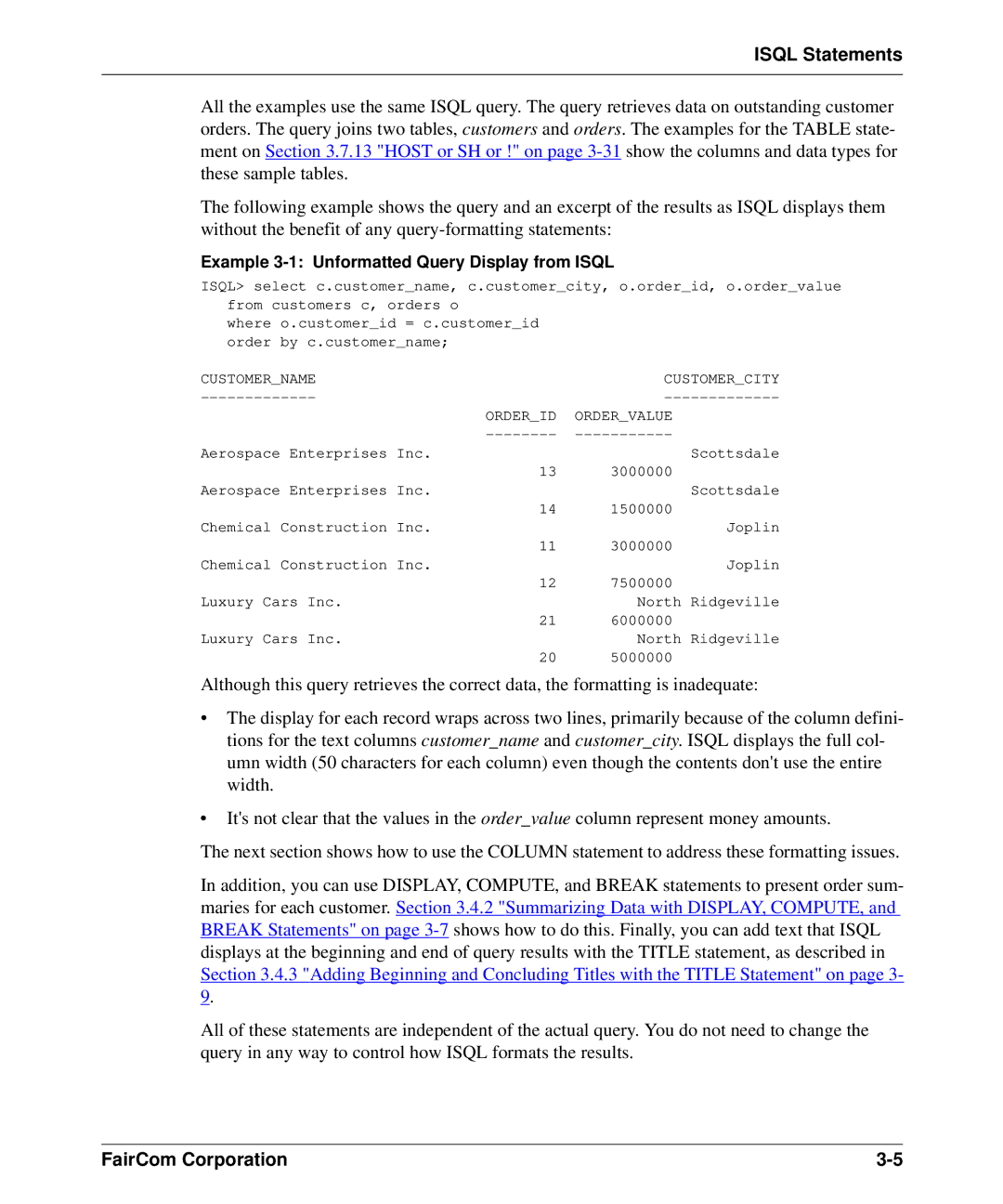
ISQL Statements
All the examples use the same ISQL query. The query retrieves data on outstanding customer orders. The query joins two tables, customers and orders. The examples for the TABLE state- ment on Section 3.7.13 "HOST or SH or !" on page
The following example shows the query and an excerpt of the results as ISQL displays them without the benefit of any
Example 3-1: Unformatted Query Display from ISQL
ISQL> select c.customer_name, c.customer_city, o.order_id, o.order_value from customers c, orders o
where o.customer_id = c.customer_id order by c.customer_name;
CUSTOMER_NAME | CUSTOMER_CITY |
ORDER_ID ORDER_VALUE | |
Aerospace Enterprises Inc. | Scottsdale |
13 | 3000000 |
Aerospace Enterprises Inc. | Scottsdale |
14 | 1500000 |
Chemical Construction Inc. | Joplin |
11 | 3000000 |
Chemical Construction Inc. | Joplin |
12 | 7500000 |
Luxury Cars Inc. | North Ridgeville |
21 | 6000000 |
Luxury Cars Inc. | North Ridgeville |
20 | 5000000 |
Although this query retrieves the correct data, the formatting is inadequate:
•The display for each record wraps across two lines, primarily because of the column defini- tions for the text columns customer_name and customer_city. ISQL displays the full col- umn width (50 characters for each column) even though the contents don't use the entire width.
•It's not clear that the values in the order_value column represent money amounts.
The next section shows how to use the COLUMN statement to address these formatting issues.
In addition, you can use DISPLAY, COMPUTE, and BREAK statements to present order sum- maries for each customer. Section 3.4.2 "Summarizing Data with DISPLAY, COMPUTE, and BREAK Statements" on page
All of these statements are independent of the actual query. You do not need to change the query in any way to control how ISQL formats the results.
FairCom Corporation |
